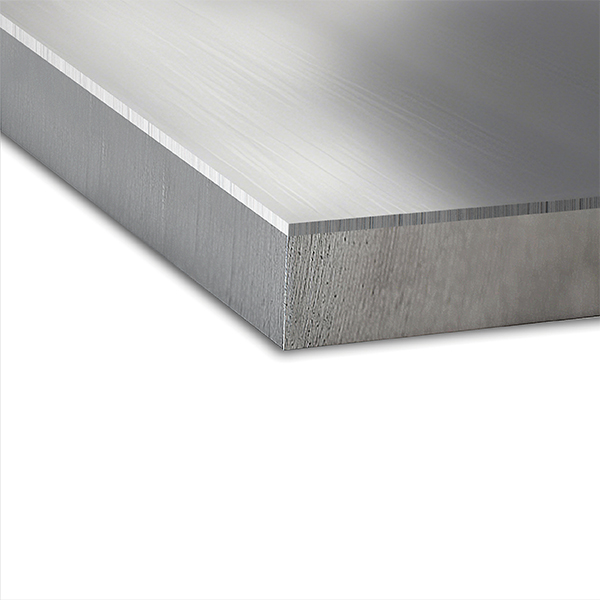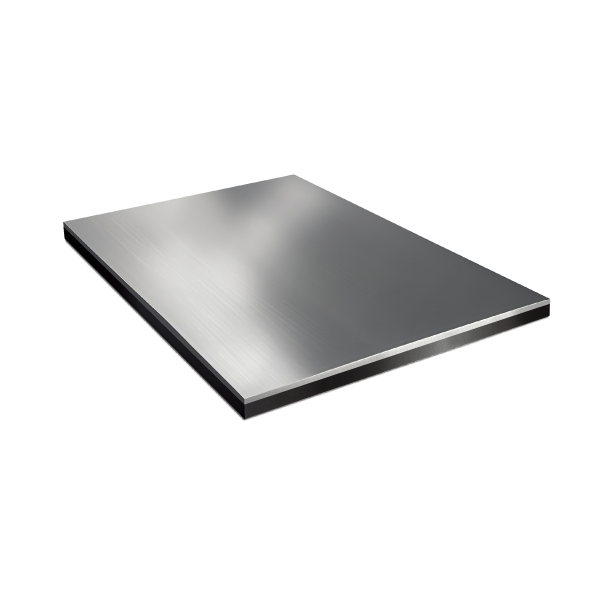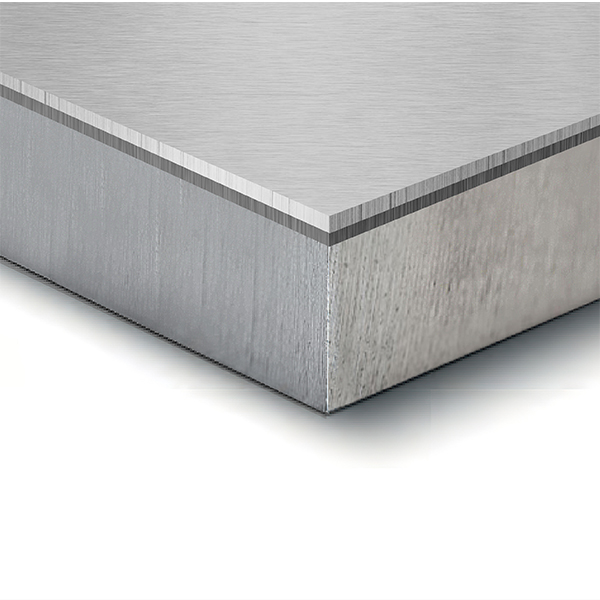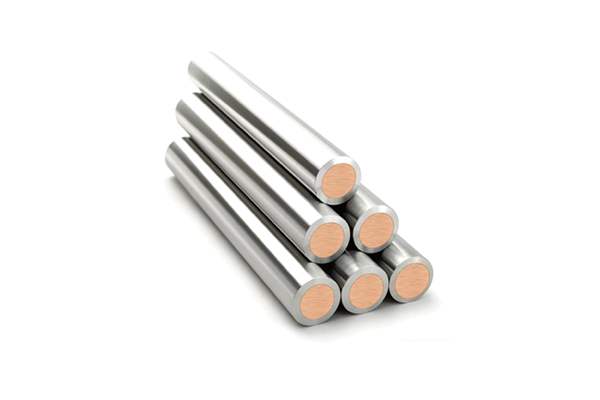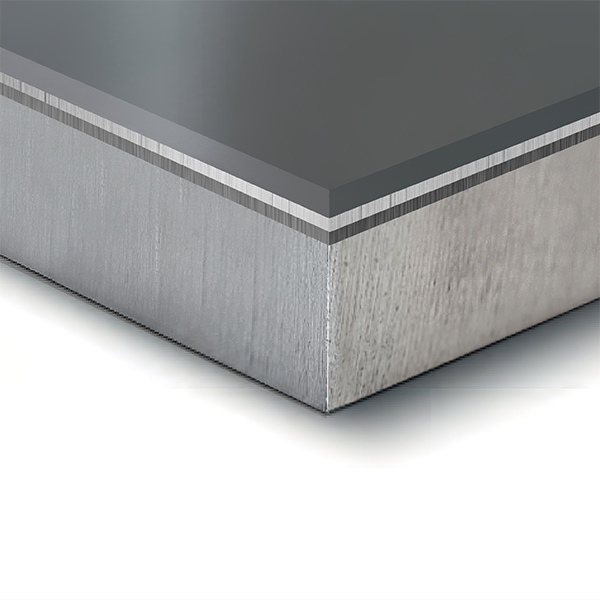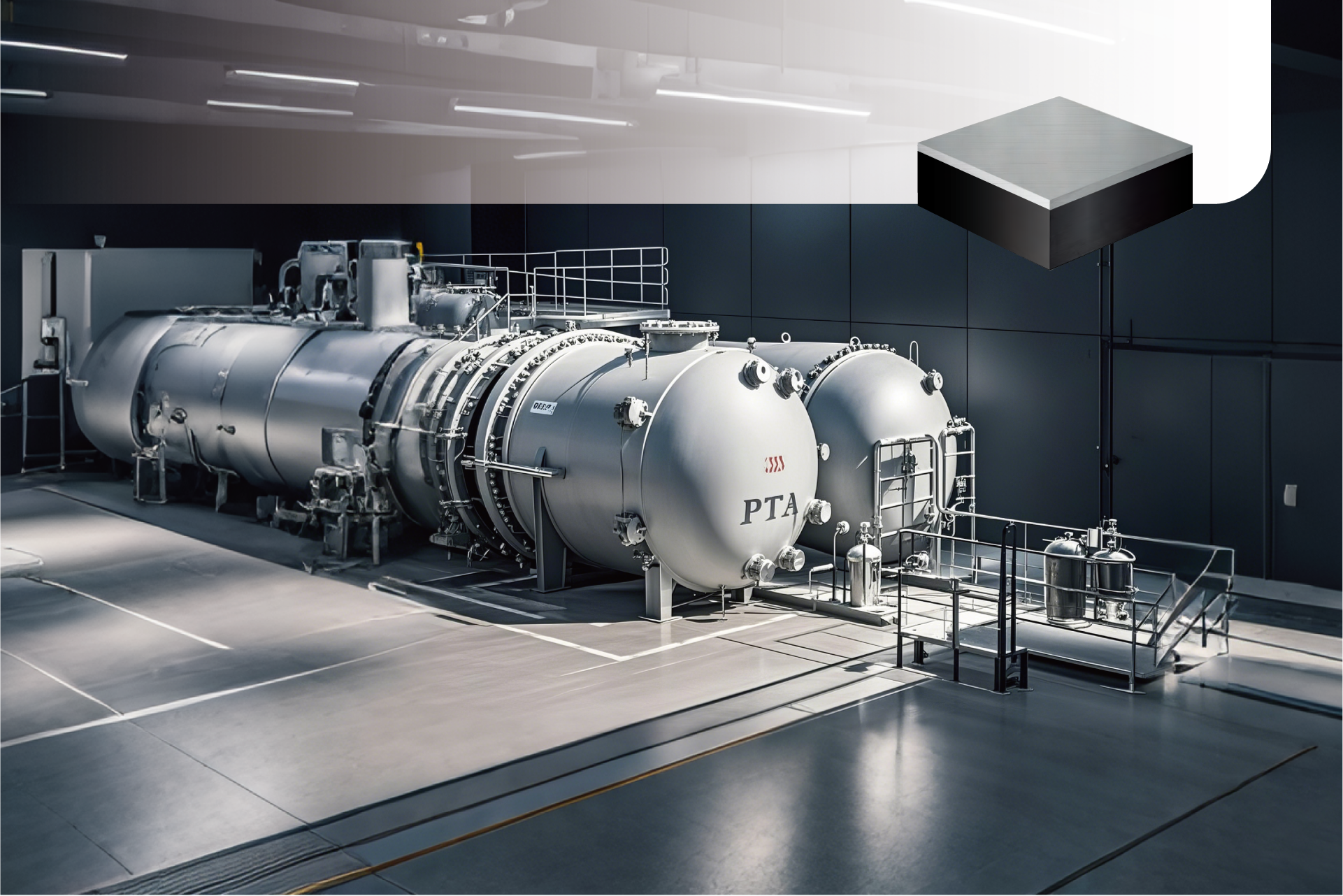
N06625 Nickel Alloy Clad Plate
The Nickel-based alloy 625 clad plate is made from Nickel-based alloy 625 and carbon steel or low-alloy steel through a composite process, combining the exceptional corrosion resistance of alloy 625 with the strength and cost-effectiveness of the base steel. Nickel alloy 625 (Inconel 625) meets ASTM B443/B444 UNS06625 and Japanese NCF625 standards .It contains high levels of chromium and molybdenum, providing resistance to pitting, crevice corrosion, and stress corrosion cracking in chloride, acidic, and seawater environments. It also maintains strength and oxidation resistance at high temperatures, suitable for use in conditions up to 980°C. As the base material, carbon or low-alloy steel offers robust structural support, significantly reducing overall material costs.
This clad plate is typically produced using explosion welding, hot-rolling, or a combination of explosion and rolling processes to form a high-strength, stable bonded interface. The Nickel alloy 625 composite plate combines high corrosion resistance and economic efficiency, making it suitable for use in marine engineering, oil and gas, and chemical equipment, where high corrosion resistance and high-temperature, high-pressure durability are essential. Typical applications include oil and gas pipelines, chemical storage tanks, reactors, desalination equipment, and nuclear reactor components, providing reliable, long-lasting material solutions for extreme environments.
PRODUCING CONDITION
ASTM A265,ASTM A264,JIS G 3602,NB/T 47002 ect.
ASME SA516, ASTM A516 Gr. 55, 60, 65, 70; ASME SA572, ASTM A572 Gr. 42, 50, 55, 60, 65; ASME SA533, ASTM A533 etc.
ASTM B443/B444; ASME SB443/SB444; UNS N06625; JIS H4551 NCF625; DIN 17744 W.Nr.2.4856 etc.
| Clad Layer THX. | TTL THX. | Max. Width | Max. Length | |
|---|---|---|---|---|
| Explosive | min. 2mm | – | 4.5m | 14m |
| Explosive + Rolling | 0.8-2mm | max. 152mm | 4.5m | 14m |
| Rolling | 0.8-14mm | 5-65mm | 4.5m | 14m |
characteristics
Different composite methods have varying requirements for the cladding and base materials. We can provide customized production based on the specific needs of our customers.
Chemical Composition
Clad layer chemical analysis (wt%) as below:
| C | Si | Mn | P | S | Ti | Cr | Ni | Mo | Alt | Co | Fe | Nb+Ta |
|---|---|---|---|---|---|---|---|---|---|---|---|---|
| 0.01 | 0.2 | 0.1 | 0.01 | 0 | 0.23 | 22.4 | 60.7 | 8.2 | 0.21 | 0.1 | 4.6 | 3.24 |
Mechanical Performance
Mechanical performance as below:
| A.A | DIM | SQ | CTM | BR(%) | T.S Rm/(Mpa) | Y.S Rp0.2/(Mpa) | E.L. % | I.B.T d=1.5a 180° | S.T. τ/MPa | S.S. τ/MPa | CAve J (-59°) | D1 /HBW | IC mm/Y | U.T | |
|---|---|---|---|---|---|---|---|---|---|---|---|---|---|---|---|
| +N | C.M | – | – | – | – | – | – | – | – | – | – | – | – | 0.27 | PASS |
| B.M | – | – | – | – | 478 | 353 | 37.5 | – | – | – | 454 | 147 | – | PASS | |
| C.P | PASS | PASS | PASS | 100% | – | – | – | PASS | 470 | 485 | – | – | – | PASS | |
| PWHTc | C.M | – | – | – | – | – | – | – | – | – | – | – | – | 0.28 | – |
| B.M | – | – | – | – | 472 | 356 | 32 | – | – | – | 184 | 159 | – | – | |
| C.P | PASS | PASS | PASS | 100% | – | – | – | – | 450 | 430 | – | – | – | – | |
| PWHTd | C.M | – | – | – | – | – | – | – | – | – | – | – | – | 0.3 | – |
| B.M | – | – | – | – | 488 | 377 | 36 | – | – | – | 234 | 165 | – | – | |
| C.P | PASS | PASS | PASS | 100% | – | – | – | – | 465 | 455 | – | – | – | – | |
| A.A: Analysis Area DIM: Dimension SQ: Surface Quality CTM: Cladding Thickness Measurement | BR(%): Bonding Rate T.S Rm/(Mpa): Tensile Strength Y.S ReL/(Mpa): Yield Strength E.L A/%: Percentage Elongation After Fracture | I.B.T d=1.5a 180°: Frontside Bending angle=180° S.T. τ/MPa: Shear Test S.S. τ/MPa: Shear Strength CAve J/-59°: Charpy Absorbed Energy Average | D1 /HBW: Average Hard Test of Base Metal IC mm/Y: Inter-granular Corrosion according to ASTM G28 A U.T: Ultrasonic Testing |
||||||||||||
Third Party Certificate
In accordance with ASTM A578/A578M Level B, we perform 100% ultrasonic testing (UT), ensuring a bonding rate of over 99%. Tests for chemical composition, mechanical properties, low-temperature impact, hardness, PWHT (Post Weld Heat Treatment), and HIC (Hydrogen-Induced Cracking) can be conducted as per customer requirements.
Additionally, we provide EN 10204 – 3.2 certification.

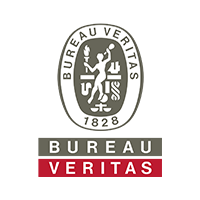

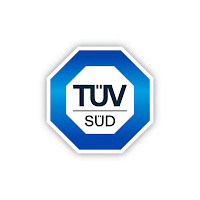

CERTIFICATION
The company has achieved ISO 9001 Quality Management System certification, ISO 14001 Environmental Management System certification, and Occupational Health and Safety Management System certification. Other certifications, such as PED and API, are currently in the application process. Our clad plate products have also received CE certification for pressure vessels, while our marine clad plates have been certified by six national classification societies, including CCS, DNV GL, LR, BV, RINA, and ABS.
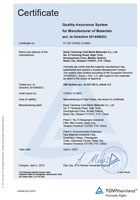
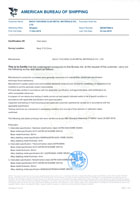
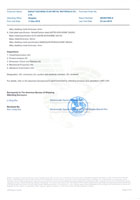
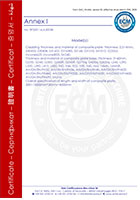
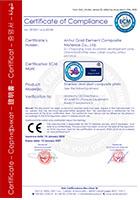
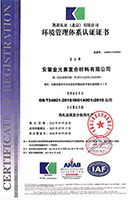

DELIVERY AND PACKING
Below is our standard packing method for export transportation, for other special requirements from our customers, we can customize. The surface of the clad plates is covered with a PE plastic film, followed by a layer of hard cardboard for protection. The outermost layer is waterproofed, and labels are applied to ensure effective identification. The product is then loaded for shipment.
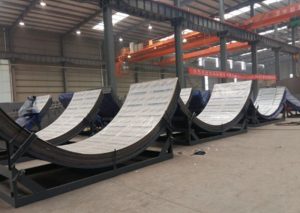
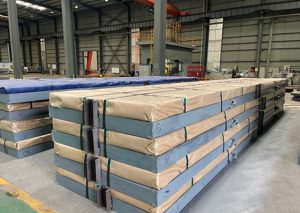
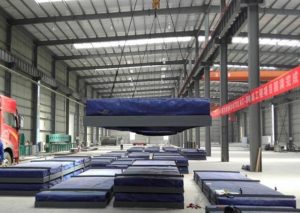
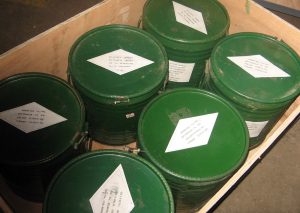
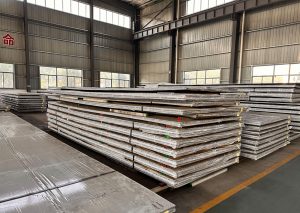

FAQ
Relative Products
Zr Ti Steel Clad Plate
Zr Ti Steel Clad Plate The zirconium/titanium/steel clad plate is a multi-layer composite material typically made by bonding zirconium, titanium, and carbon
Ti Cu Clad Rod
Ti Cu Clad Rod Titanium-clad copper is a composite material created primarily through explosive welding or rolling (with explosive welding being
Ta Zr Ti Steel Clad Plate
Ta Zr Ti Steel Clad Plate The Tantalum/Zirconium/Titanium/Steel clad plate is indeed an exceptional multilayer material. Its sophisticated design provides high corrosion
Contact

